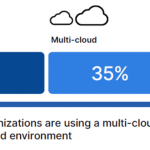Photo courtesy of Vishakha Sadhwani
Opinions expressed by Digital Journal contributors are their own.
Advancements in Artificial Intelligence (AI) are generating significant buzz in the industry. The task to effectively manage delivery lifecycles and to ensure cloud security in deploying and serving these models has become crucial with so many developments and applications emerging. Vishakha Sadhwani, a cloud architect at Google, is a prominent expert in cloud technology and security. Her work has become increasingly valuable as more organizations move towards cloud-native approaches to gain flexibility in developing and launching applications.
Sadhwani is a seasoned DevOps and Cloud Computing professional with over eight years of hands-on experience working with major cloud providers. She’s a passionate advocate for modernizing how organizations build and deploy software, championing practices like containerization, continuous integration, and continuous deployment (CI/CD). Inspired by encounters with industry luminaries like Kelsey Hightower, Vishakha dove headfirst into the world of Kubernetes, earning the trifecta of tough CNCF certifications: CKA, CKAD, and CKS.
Vishakha is a sought-after speaker, sharing her expertise on cloud deployment and security at conferences like IEEE Cloud Summit, WomenInTech, and Major League Hacking. As a contributing writer for CyberDefense Magazine, RSA Conference, and major other magazines, she delivers valuable industry insights on topics ranging from cloud security to emerging threats. With a knack for identifying and resolving technical challenges, Vishakha excels at recommending migration paths, integration strategies, and developing architectural blueprints for data center and mainframe migration opportunities.
The growth of cloud-native environments
The adoption of container technology has significantly impacted the software development lifecycle. Projections indicate the global container market will reach an annual growth rate (CAGR) of 30.1% from 2020 to 2027. This growth is attributed to the demand for faster application development, improved scalability, and enhanced portability across different cloud platforms.
Sadhwani notes that while cloud-native environments have simplified the development lifecycle, they also introduce cybersecurity issues across the entire container stack, from images and containers to hosts, runtimes, registries, and orchestration platforms.
Containerization is a method of packaging software applications and their dependencies into standardized, isolated units called containers. This allows applications to run consistently across different computing environments, from development to production. Organizations adopt containerization for several key benefits, such as portability and efficiency.
The importance of container security
As organizations adopt this robust technology, the need for robust security measures becomes evident. Sadhwani’s 2022 publication “Cloud Container Security’s Next Move” emphasizes the importance of investing in securing the entire container stack. She highlights the various components that require protection, including images, containers, hosts, runtimes, registries, and orchestration platforms like Kubernetes.
Sadhwani recommends that organizations adopt comprehensive security measures to protect their containerized environments, including regular security audits, automated vulnerability scanning, implementing access controls, and continuous monitoring.
However, some experts argue that organizations must consider a more comprehensive perspective on cloud security. A cybersecurity analyst suggests that while securing the container stack is important, organizations must consider network security, identity, access management, and data protection in their overall cloud security strategy.
The benefits of CI/CD practices
Before joining Google, Sadhwani worked at Amazon Web Services (AWS) as a Cloud Engineer II and subject matter expert for AWS CloudFormation. In this role, she helped accelerate customer adoption of containerization and CI/CD services like AWS CodePipeline, CodeBuild, CodeDeploy, and containerized services like ECS and EKS.
Sadhwani explains that implementing CI/CD practices enables businesses to deliver software faster, with higher quality and reliability. Teams can identify and fix issues early in the development cycle by automating the build, test, and deployment processes, reducing the risk of costly production failures.
The outlook for cloud adoption and security
Estimates suggest that by 2025, 95% of new digital workloads will deploy on cloud-native platforms, up from 30% in 2021. As organizations navigate this evolving terrain, the demand for skillfulness in cloud architecture, containerization, and security will likely increase.
Sadhwani believes that fostering a culture of continuous improvement and collaboration is critical to the future of cloud adoption and security. Organizations can effectively utilize cloud-native environments while maintaining high security and compliance standards by promoting solid partnerships between development, operations, and security teams.
As the industry progresses, professionals like Vishakha Sadhwani are expected to play a significant role in cloud technology and security. Their competence, innovative thinking, and commitment to best practices contribute to developing a more agile, secure, and resilient digital environment.
This post was originally published on the 3rd party site mentioned in the title of this this site






